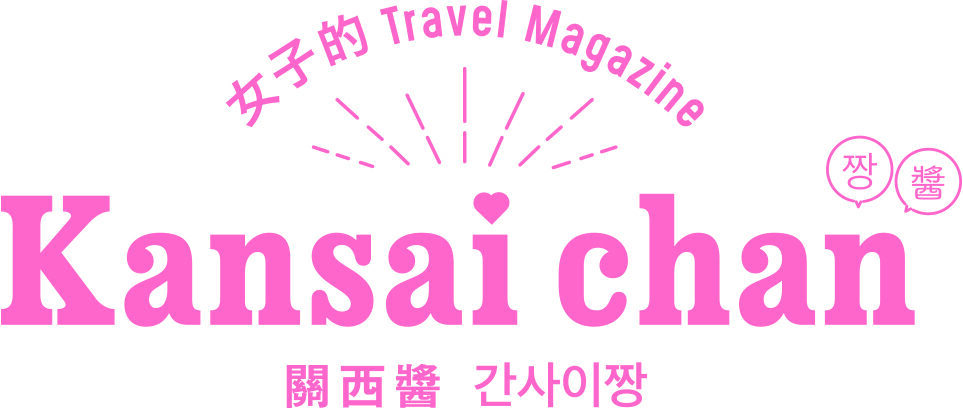
How to meet Geiko and Maiko in Kyoto
If you visit Japan, you would like to meet geiko and maiko at least once, wouldn’t you? You may have seen them in pictures, but do you know where you can meet them? In this article, I have compiled a list of places in Kyoto where you can meet geiko and maiko.
In Kyoto, there is a district called Kagai, where “ochaya” (teahouses) are gathered. Ochaya is a place where you can watch geiko and maiko dance and enjoy conversation with them. In Kyoto, there are five Kagai: Kamishichiken, Gion Koubu, Ponto-cho, Gion Higashi, and Miyagawa-cho, collectively known as Kyoto Gokagai.
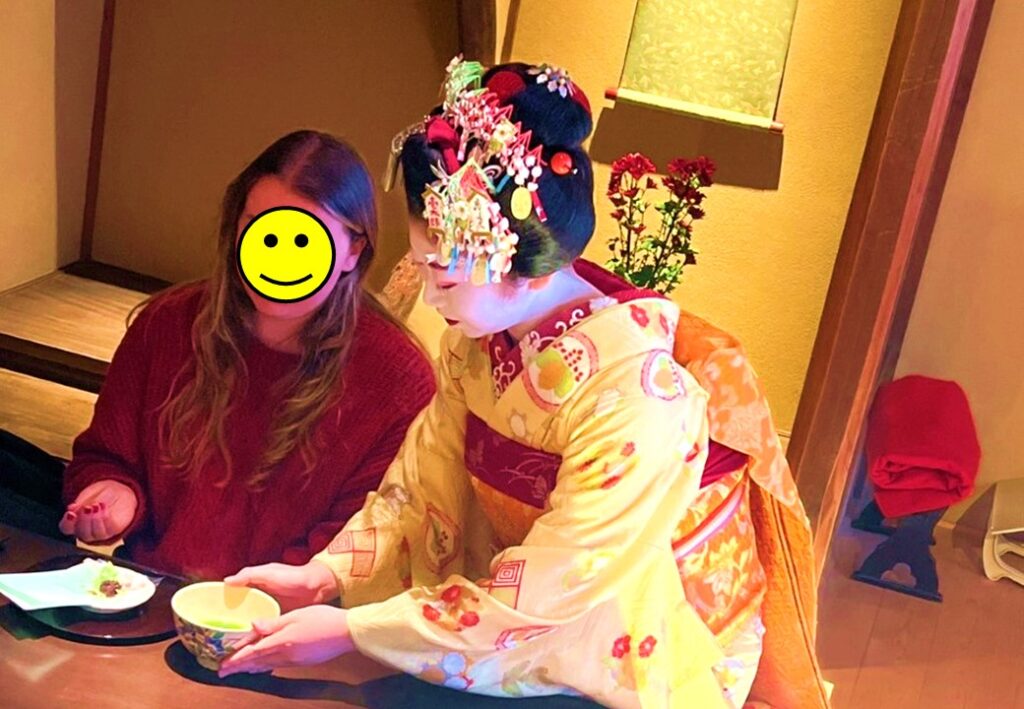
However, for tourists and others who have no connection with the teahouses or first time customers are not allowed to enter the teahouses.
But even you, a tourist, have the opportunity to see them.
In this article, we will introduce some of these wonderful opportunities.
How to meet Geiko and Maiko in Kyoto
1. Going to see a dance performance
🌸Kamishichiken
🌸Gion Koubu
🌸Ponto-cho
🌸Gion Higshi
🌸Miyagawa-cho
2. Going to a beer garden
🌸Kamishichiken Beer Garden
🌸Ponto-cho Beer Hall
3. Ask the ryokan or ryotei to make arrangements
4. Believe in your luck!
1. Going to see a dance performance
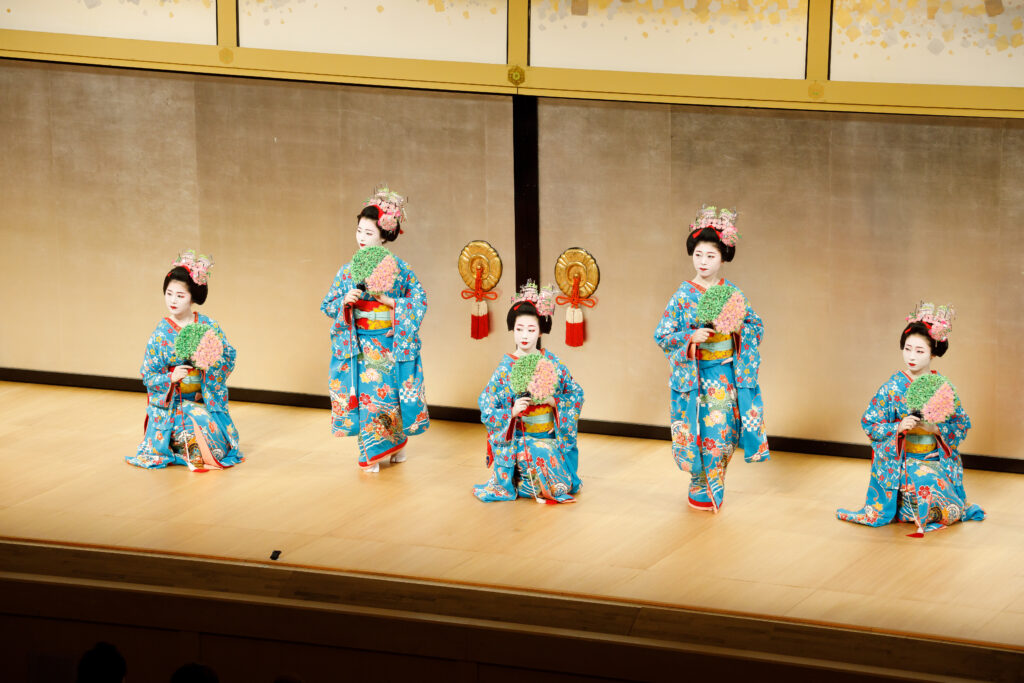
In each of Kyoto’s five Kagai, a dance performance is held every year in which geiko and maiko show the results of their daily training. The general public can also enjoy these performances by purchasing a ticket. I would like to introduce the Kyoto Five Kagai and explain each dance performance.
🌸Kamishichiken🌸

Kamishichiken is the oldest kagai in Kyoto.
Located in the northern part of Kyoto Imperial Palace, it is characterized by an elegant townscape somewhat removed from the central districts of Kyoto such as Shijo-Kawaramachi and Gion. It is recommended to visit there with visiting Kitano Tenmangu Shrine.
The “Kitano Odori” dance performance is held in March and the “Kotobukikai” in November at Kamishichiken Kaburenjo.
The dance is performed in the Hanayagi stykel, and the finale of “Kitano Odori”, “Kamishichiken Yakyoku”, features all geiko in formal black costumes and maiko in colorful and gorgeous costumes.
🌸Gion Koubu🌸
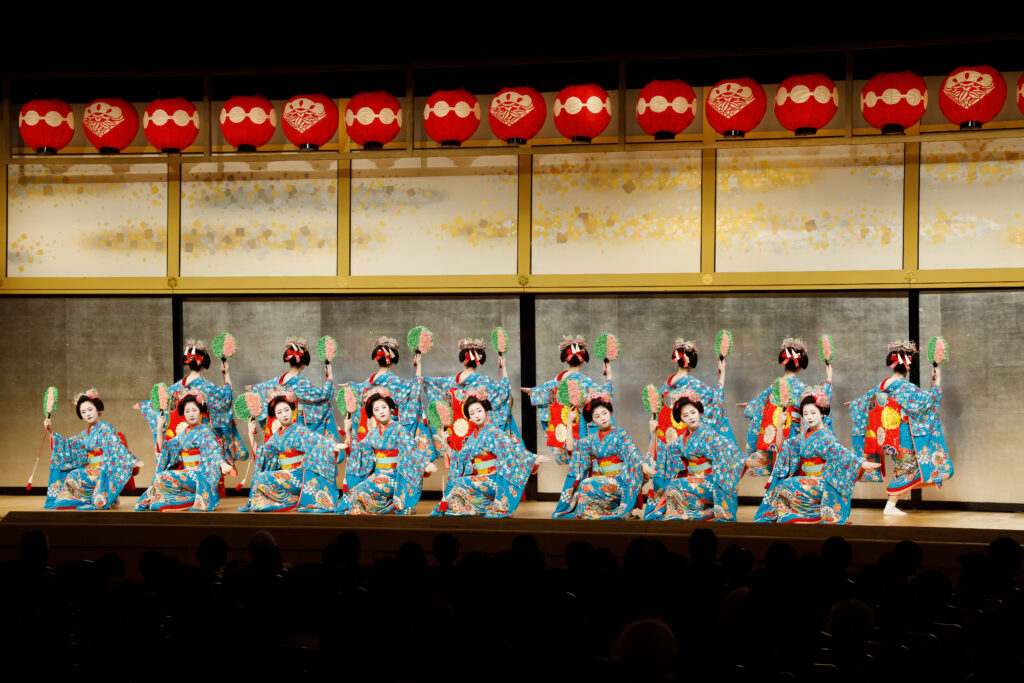
Gion Koubu is the largest kagai in Kyoto and has the largest number of geiko, maiko and teahouses among the Kyoto’s five kagai. Gion Koubu’s main street, Hanamikoji, is always crowded with many tourists.
The “Miyako Odori” dance performance is held in April, and the “Onshukai” dance performance is held in October at the Gion Koubu Kaburenjo. The “Miyako Odori” began in 1872, when Japan’s first exposition was held in 1872, and geiko and maiko danced as a supplement to the exposition. The dance is of the Inoue style, known as the Cherry Dance in overseas.
🌸Ponto-cho🌸
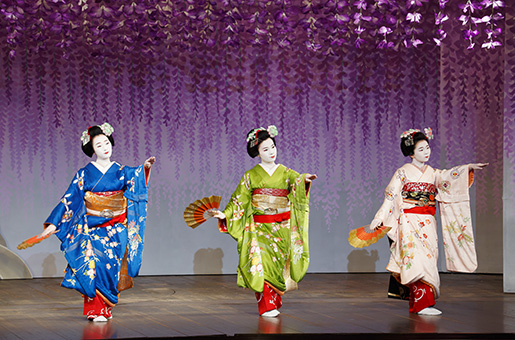
Ponto-cho is a narrow street running north-south along the left bank of the Kamo River for about 500 meters. From May to October, Noryo-yuka (riverbeds) along the Kamo River are a typical summer scene in Kyoto. After watching a stage performance, why not enjoy Kyoto cuisine on a riverbed along the Kamo River? “Kamogawa Odori” in May and “Suimeikai” in October are held at Ponto-cho Kaburenjo. The dance is performed in the Onoe style, and each year the originality and ingenuity of the performances are highly acclaimed.
🌸Gion Higashi🌸
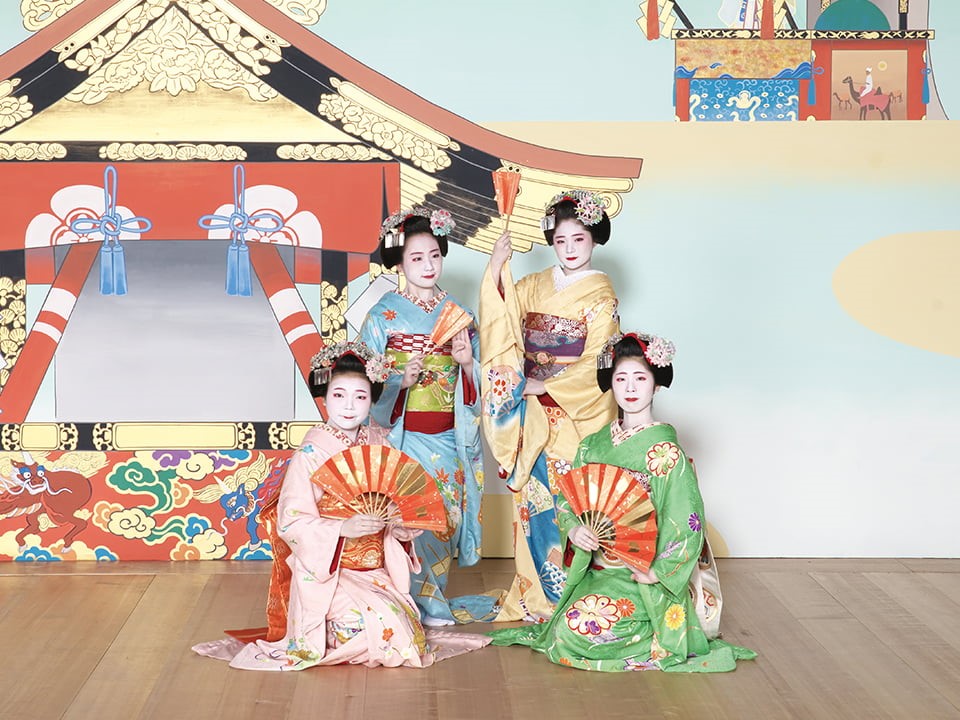
Gion Higashi is adjacent to Gion Koubu and has about 10 teahouses in a small area. After the performance, you may wish to visit Kankame Inari Shrine, famous for its fire protection.
The “Gion Odori” performance, in November, is held at the Gion Kaikan. It is the only performance held in the fall in Kyoto’s five kagais and is loved by both locals and tourists.
The dance is performed by the Fujima style, and each year is characterized by an original script and a spectacular and distinctive composition.
🌸Miyagawa-cho🌸
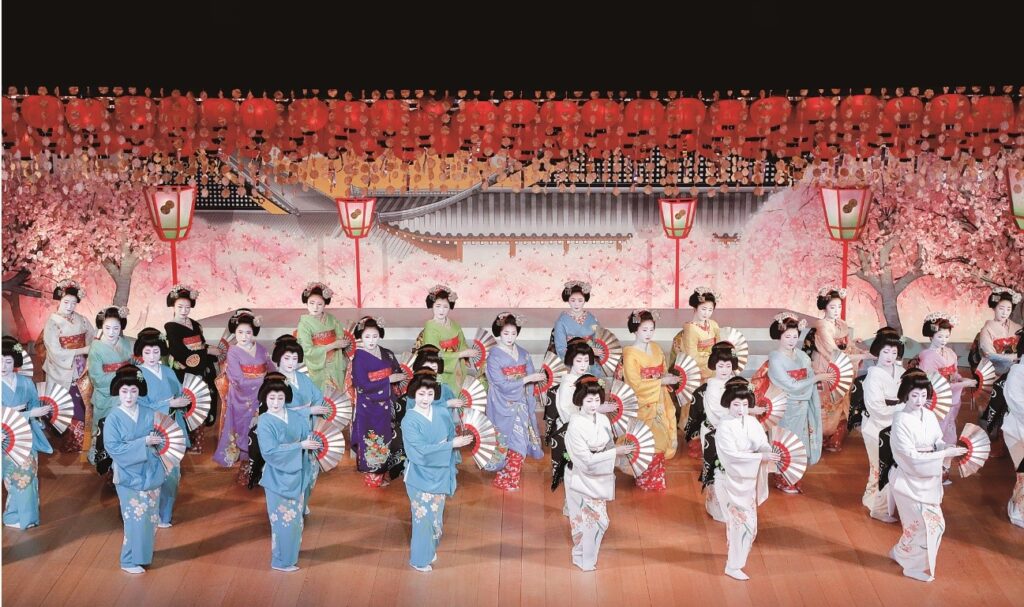
Miyagawa-cho is located on the right bank of the Kamo River and has developed along with Kabuki. The town has a quiet, elegant atmosphere that is typical of a kagai.
Usually, the “Kyo Odori” dance performance is held in April and the “Mizue-kai” in October at the Miyagawa-cho Kaburenjo. The dance is performed in the Wakayagi style. The finale of the Kyo Odori, “Miyagawa Ondo,” is known for its motifs of Kyoto’s famous landmarks and specialties. It’s performed by all geiko and maiko, and the audience sings along with them.
The Miyagawa-cho Kaburenjo is currently under construction, so the Kyo Odori and Mizue-kai will be held at a different venue. The new venue is scheduled to open in 2025.
2. Going to a beer garden
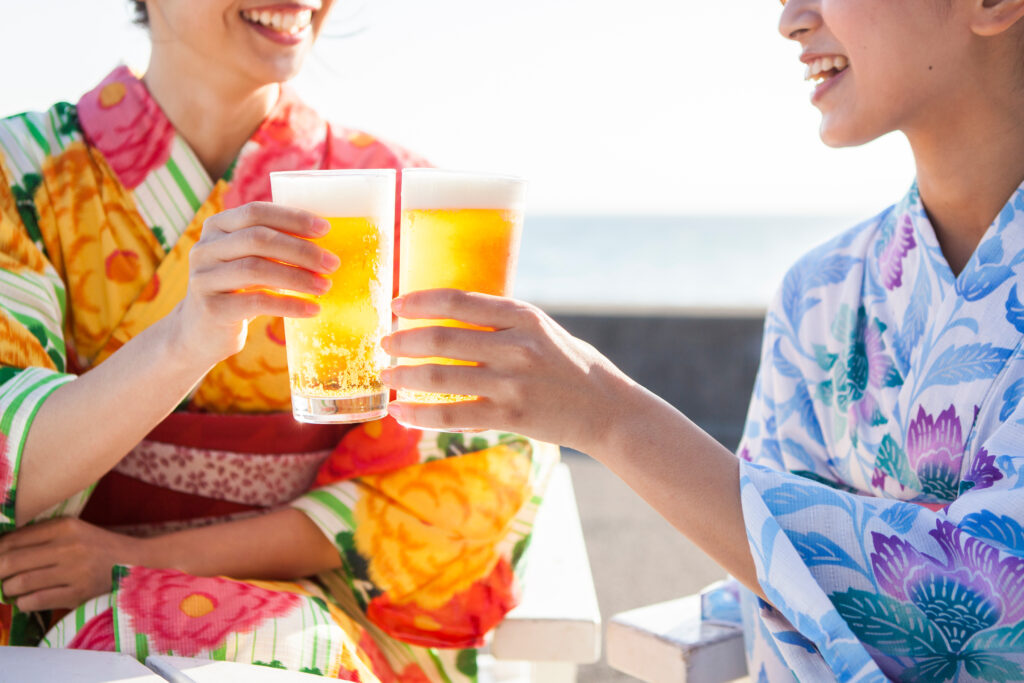
Some of the Kyoto’ five kagais hold beer gardens in the summer, making it easy for even first-time visitors to visit.
🌸Kami Shichiken Beer Garden (Open on July – September)🌸
A beer garden is held at Kami Shichiken Kaburenjo’s garden and part of the building.
*Japanese only
*Cash (Japanese yen) payment only, credit card payment not accepted.
*Minors under 18 years of age, including those accompanied by a parent or guardian, are not allowed to enter.
🌸Ponto-cho Beer Hall🌸

Japanese beer breweries sometimes collaborate with Kyoto’s Kagai to hold beer halls.
Last summer, the Ponto-cho Beer Hall was held at the Ponto-cho Kaburenjo. Two gei-maiko (geisha and maiko) come to the venue and perform a dance on the stage. Three kinds of Premium Malts are all-you-can-drink within the time limit. Look forward to seeing if this event will be held again next year!
*It will be indoors, not in the beer garden. The beer hall is a two-part event.
3. Ask the ryokan or ryotei to make arrangements
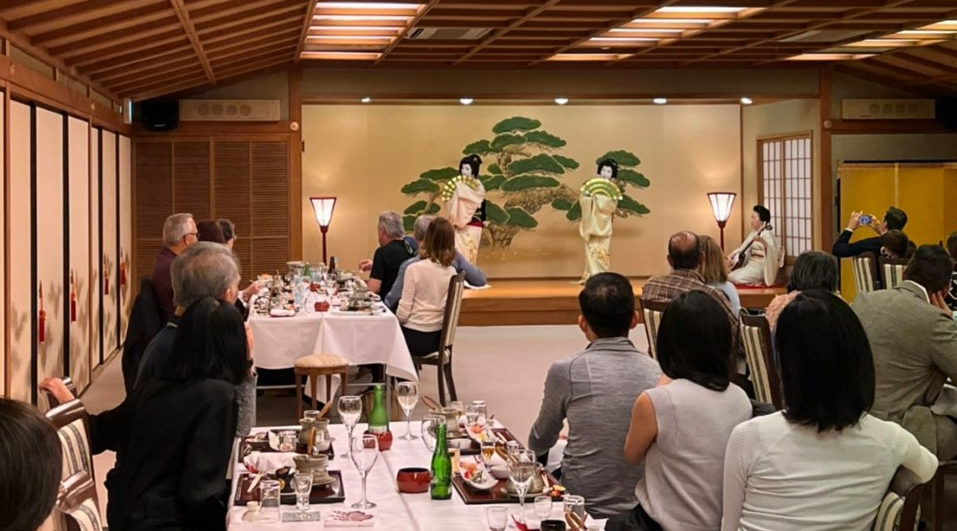
At some ryokan and ryotei, geiko and maiko can be arranged. They can come to your banquet and perform dances, serve drinks, and enjoy the geisha’s entertainment. Some bars run by ochaya (teahouses) allow first-time visitors, but the price is much higher. If you have a budget to spare, you may want to give it a try.
4. Believe in your luck
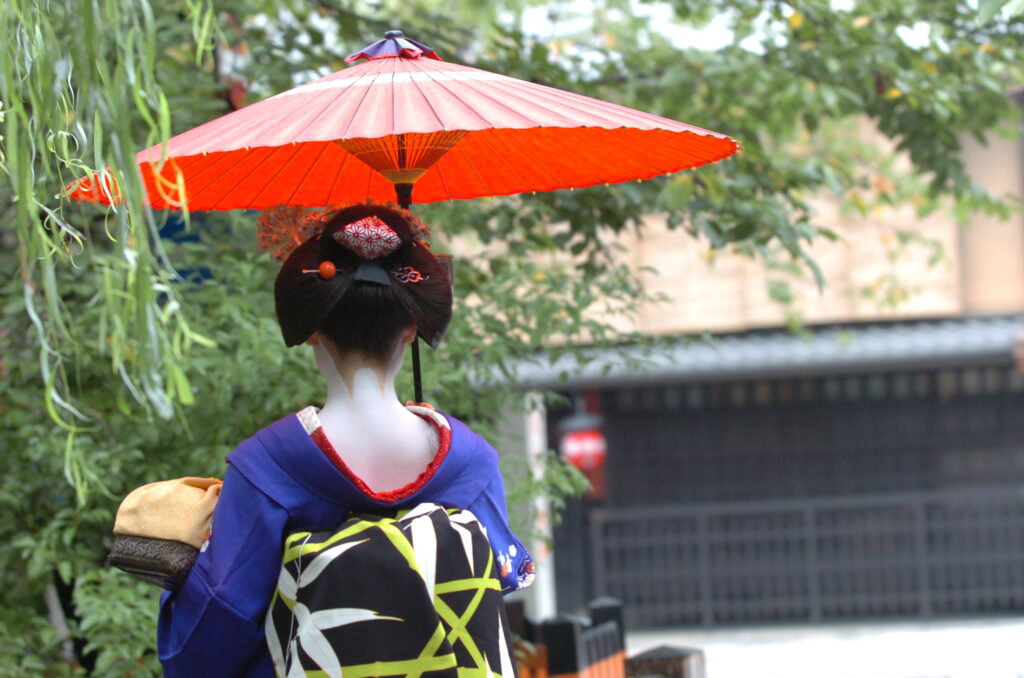
If you are lucky, you may see geiko and maiko in the city. However, most of the maiko you see in Kyoto during the tourist season, around Kiyomizu-dera Temple or Arashiyama, are not actually real maiko. They are called “henshin maiko” or “sightseeing maiko,” and are often tourists dressed as maiko. During the daytime, geiko and maiko are often in training, so there is a high possibility that the women you see dressed as maiko during the daytime are not real maiko. If you see a white-painted person walking quickly through town in the evening, there is a high possibility that she is real.
But never touch them or pull their kimono. Do not stand in front of these women as they walk and block their path in order to take their picture. If you see a geiko or maiko, just watch them from a distance and press the shutter of your mind.

Smillar Article
Latest Contents
- JR-West Kansai WIDE Area Excursion Pass A limited Time Offer Available to Foreign Residents of Japan

- 5 Best things to do in ISESHIMA

- Off the Beaten Path in Western Japan
-150x150.jpg)
Enjoy Kansai with KTIC
Tourist Information / PASS / WIFI / Day Tour
Kansai International Airport (KIX) T1
Open Everyday 9.30 – 17.30
Kyoto Tower 3F
Open Everyday 10.00 – 17.00
